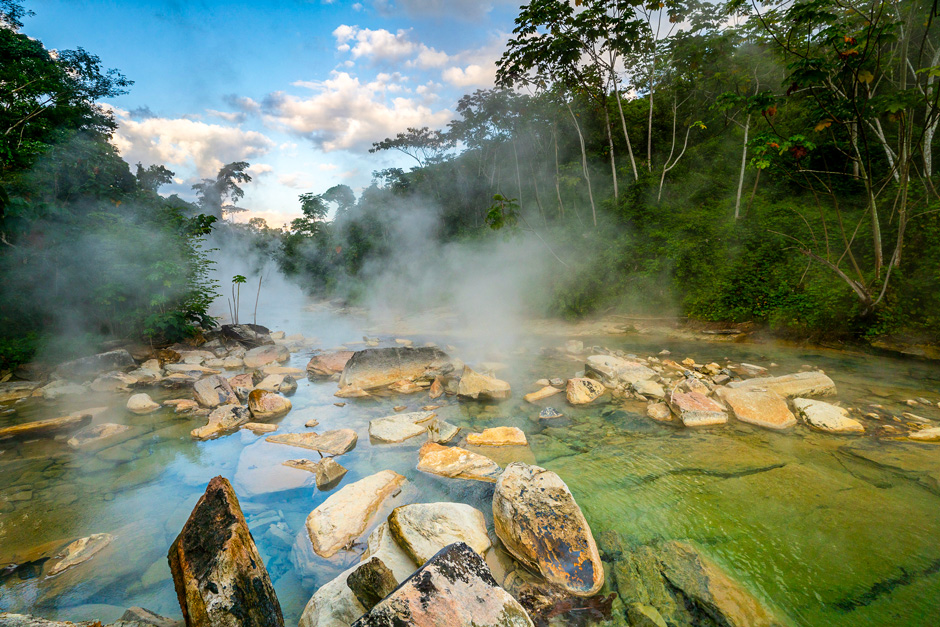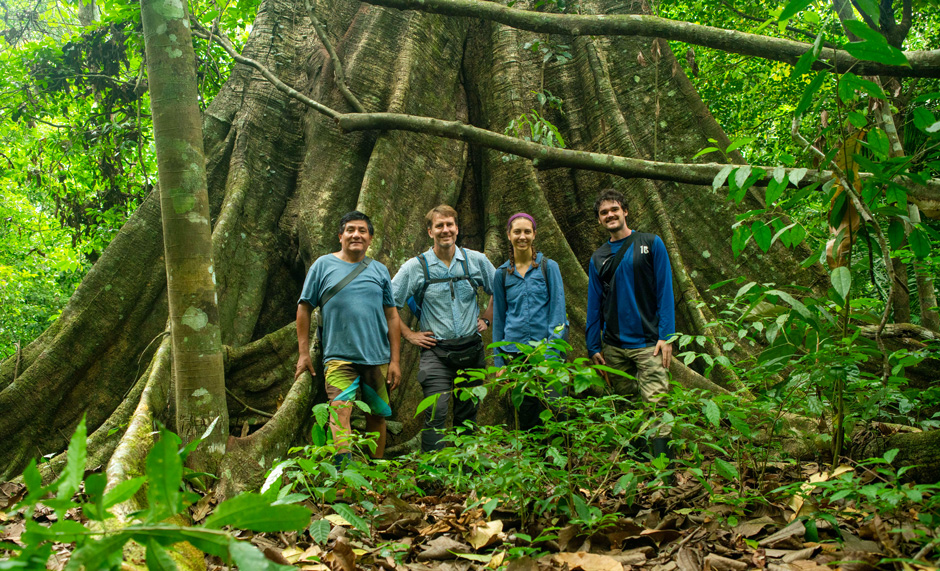By Janette Neuwahl Tannen, University of Miami News
It’s a place where few living things can survive in the water.
Deep in the world’s largest rainforest, there is a boiling river. Found in eastern central Peru, it is a small tributary that eventually leads to the Amazon River.
Heated by cracks in the Earth’s crust, at its warmest spots, the water can reach 200 degrees Fahrenheit, an inhospitable environment with air temperatures hotter than anywhere else in the Amazon.

But the steamy river, known locally as “Shanay-Timpishka,” which translates as “boiled with the heat of the sun,” also offers an interesting perspective on what may happen to plant and tree communities as climate change pushes temperatures upward. After visiting in 2021, a team of University of Miami biologists recognized that the boiling river could serve as a natural experiment.
“It really provides us a window into the future because the Amazon will get hotter whether we like it or not, so this allows us to understand what increases in temperature will do to the forest composition,” said Riley Fortier, lead author on a study of the site published recently in Global Change Biology, and a graduate student in professor Kenneth Feeley’s Jungle Biology lab. “It can tell us which species will be lost, and what the makeup of the forest might be like in the future.”
The team returned to Peru in 2022 and mapped the tropical plants and trees found in the area at 70 locations, starting upstream, where temperatures were cooler, down to the hottest part of the boiling river, where air temperatures often exceed 110 degrees Fahrenheit.
By examining forests for about a mile along the sweltering river and monitoring temperatures with onsite sensors, the team found several insights. They saw that plant diversity declined in the hottest parts of the river—with an 11 percent drop in tree diversity per each degree of warming — and that only plants suited for very warm tropical climates are able to thrive near the boiling river. Their results predict how tropical rainforests could look in the future Amazon as global warming continues.
“Overall, the tree community is less diverse, so we see fewer species in hotter spots,” Fortier said. “And forest composition was also more homogenous in the warmest locations, whereas in cooler forest plots, there was more plant diversity.”

One thing that surprised Fortier was how quickly the vegetation changed along the river.
“We saw a very directional change in composition, where the hottest part of the forest along the river had a greater representation of species that grow in hotter areas of the Amazon,” Fortier added. “Then, there was a drastic change in species as you moved away from the hottest part of the river. Usually, you wouldn’t see such a clear change in the species composition over such a short distance.”
For example, Fortier and Feeley saw that the hotter areas around the boiling river were drier and had more vines and scrubby vegetation. The trees were also smaller and less diverse, similar to a transition zone between a forest and a savanna ecosystem, but all within less than a mile of lush, green jungle.
“Over the course of dozens of miles, you might expect to see dramatic changes like that, but in the small sampling area that we had, you typically wouldn’t see such a clear change in composition,” Fortier added.
Feeley’s lab will continue its research of the boiling river, since it is such a unique place that could portend much about our natural world.
“You can’t heat a whole forest, at least not artificially, which is one of the coolest aspects of the boiling river,” Fortier added. “It’s a useful system because we can isolate temperature as having such an important effect on an entire plant community. At the boiling river, the rainfall, soil, and humidity are constant, but what we see is that as global warming happens, everything will change.”
This piece was originally published at https://news.miami.edu/stories/2025/01/a-window-into-the-future-of-amazonia.html. Banner photo: Riley Fortier treks through the boiling river region of the Amazon rainforest in Peru (Photo courtesy of Riley Fortier).
Sign up for The Invading Sea newsletter by visiting here. To support The Invading Sea, click here to make a donation. If you are interested in submitting an opinion piece to The Invading Sea, email Editor Nathan Crabbe at ncrabbe@fau.edu.



